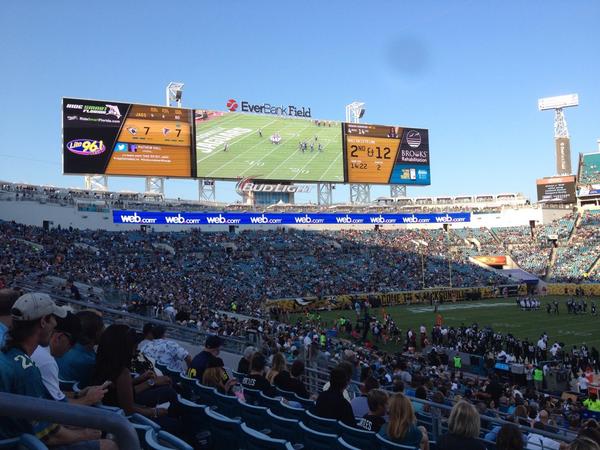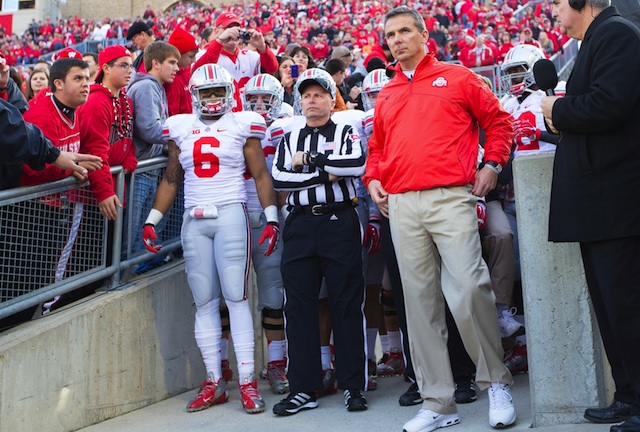When watching a game, you’ll constantly see people looking at the large scoreboard located at every stadium. The scoreboard tells you information such as the quarter, time left, play clock, who has possession of the ball, the down and how many yards until the next first down.
THE COMPONENTS OF A SCOREBOARD INCLUDE:
- Large Video Board: This is the board you watch for close plays, potential penalties, any type of score and even fan shots during the game. If a play is under review, chances are the team will show the play in question over and over again on the scoreboard so fans can for themselves whether the call will stand or be overturned.
- General Scoreboard Information: Team names are always on a scoreboard, but the numbers just below the team names will always change. The numbers usually directly below the team name indicate the score of the game; the smaller numbers just to the right are how many timeouts each team has left.
- Downs: this number shows what down the offense is currently on. A down is one of four chances a team on offense has to gain 10 yards.
- To Go: This number is the numberof yards the offense has to go until they earn another first down. If they do not gain the yards needed after three attempts, they can choose to kick the ball away—this is called punting—or go for it on fourth down. If they fail on their final try, the other team takes over possession “on downs.”
- Ball On: Shows what yardline the ball is on. A football field is 100 yards long and this number can help you calculate how far your team has to go to score.
- Game Clock: The larger time clock counts down the quarter. There are four 15-minute quarters and one 15-minute halftime show in football and this clock will countdown each one.
- Play Clock: The smaller clock is the play clock. When a team is on offense (trying to score), the quarterback has 40 seconds on every play to snap the ball (to snap means to start the action of taking the ball and attempting a run play or pass play). The play clock is started as soon as the ref sets the ball down. This play clock can become a very strategic tool at the end of the 1st half (right before halftime) and at the end of games. Teams with a large lead will normally try to take their time snapping the ball to try and run as much time off the clock as possible, giving the other team less time to score.
IF YOU‘RE WATCHING THE GAME AT HOME
Though NFL games shown on TV load their screens up with all kinds of pictures, stats, and yellow lines, the information shown the most is the same displayed on an NFL scoreboard. Usually look for a bottom bar or small box off to the side on an NFL game broadcast to view the same information noted above.
One thing you will see while at home is the yellow line on the field. This line is the virtual first down line. The yellow line is not visible to the players on the field, but is superimposed by the network channel you are watching. If the offense reaches this yellow line, they’ve earned a first down.






